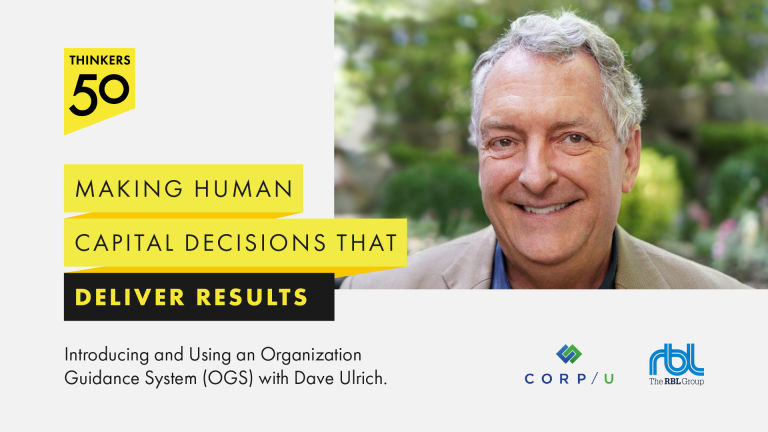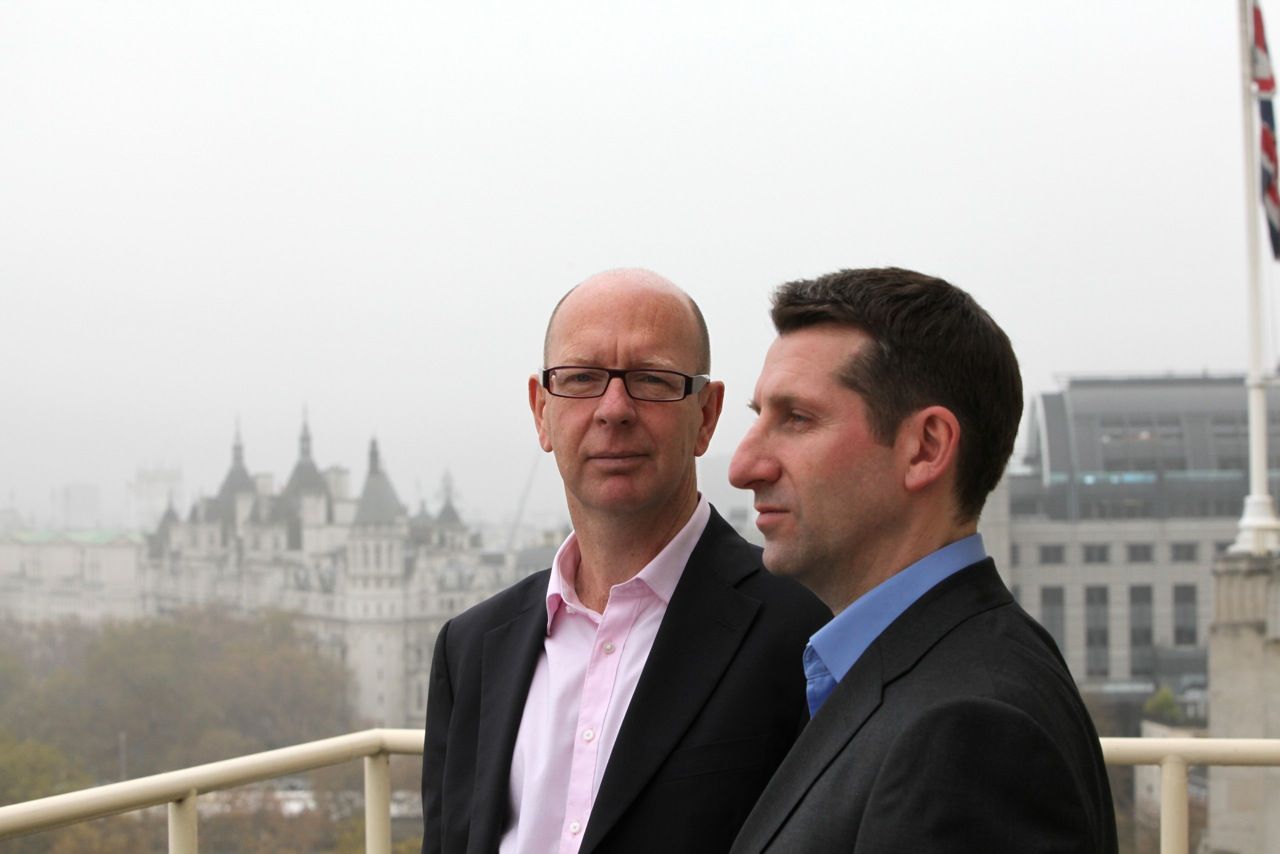

by Stuart Crainer & Des Dearlove
The debate about the state and future of book publishing is long running. It tends to focus on ebooks and the economics of what many perceive as a dying industry. What tends to be forgotten is the thing itself: the book.
Truth be told, many of the books published in the business sphere are of poor quality. Often they are puffed up articles masquerading as books. Frequently, they are tediously self-aggrandizing. Many look to a rose-tinted past or overly celebrate the minor triumphs of particular companies.
Little is original, even less so in the world of business books. That’s why it is good to see innovation and honesty at work in this market. Both things are to the fore in Dave Ulrich’s latest thinking. Ulrich is best known for his work on HR and leadership. He has featured in the Thinkers50 ranking for a number of years and spends his life travelling the world evangelizing his message.
Ulrich’s latest work marks an important departure for him – and for the business book genre. His book Leadership Capital Index will be published by Berrett Koehler in September. So far, so predictable. But this is where Ulrich’s original approach begins. First, the title of the book was crowd sourced. Hundreds of people worldwide responded to a series of possible titles and sub-titles.
The second difference with the book is that it does not pretend to be the definitive final word on the subject. And this is after a decade of research by Ulrich. The book aims to be the starting point in creating a robust leadership capital index which will allow investors to monitor and measure the quality of leadership in the companies they are interested in investing in. Note that this is the starting point rather than the final destination.
In person Dave Ulrich is passionately energetic about the book. Listening to him, it sounds as if it is the first book he has ever been involved in. It isn’t. His work would fill an entire library shelfing unit. But this book is part of personal mission.
“One reason the book has taken a decade to write is the difficulty of articulating a simple solution to the complex task of judging leadership quality as an outside investor,” Ulrich told us when we talked in London. “I started by trying to help investors go from instinctive to rigorous leadership assessments. I wanted the leadership capital index proposed in this book to take investors from the present 5% confidence in their assessment of leadership to a 90% confidence level, but I eventually concluded that this goal was naïve on my part. The complexity and research it would require is far beyond my capacity.”
Ulrich didn’t have the capacity to write the definitive work, so he decided to think of his book in entrepreneurial terms as the MVP—minimum viable process (rather than product). “In software, innovators get started, go public, share ideas, receive critiques, experiment, and continually improve. In the same vein, my leadership capital index is not yet perfect—but it offers a simple and already helpful approach to the question of assessing genuine value,” says Ulrich.
The idea of the MVP was championed by Steve Blank and he identifies five key elements: to be able to test a product hypothesis with minimal resources; accelerate learning; reduce wasted engineering hours; get the product to early customers as soon as possible; and as a base for other products.
These chime with Dave Ulrich’s hopes for Leadership Capital Index: “My hope is to begin a dialogue about something that investors and others will seek to take further. The leadership capital index might be used to assess firm value, but also become part of conversations about risk, social responsibility, governance, mergers and acquisitions, and leadership development. This is a lot to ask of one book, which is why the ideas should be seen as a start on this journey and not as a final answer.”
If others follow Dave Ulrich’s lead, the business book might have a new life as a dynamic catalyst of ideas rather than a source of saccharine solutions. In the ideas market, the book may be the most dynamic technology we have.

Thinkers50 Limited
The Studio
Highfield Lane
Wargrave RG10 8PZ
United Kingdom

Thinkers50 Limited
The Studio
Highfield Lane
Wargrave RG10 8PZ
United Kingdom

Thinkers50 Limited
The Studio
Highfield Lane
Wargrave RG10 8PZ
United Kingdom
| Cookie | Duration | Description |
|---|---|---|
| LANG | 9 hours | Linkedin set this cookie to set user's preferred language. |
| nsid | session | This cookie is set by the provider PayPal to enable the PayPal payment service in the website. |
| sp_landing | 1 day | The sp_landing is set by Spotify to implement audio content from Spotify on the website and also registers information on user interaction related to the audio content. |
| sp_t | 1 year | The sp_t cookie is set by Spotify to implement audio content from Spotify on the website and also registers information on user interaction related to the audio content. |
| tsrce | 3 days | PayPal sets this cookie to enable the PayPal payment service in the website. |
| x-pp-s | session | PayPal sets this cookie to process payments on the site. |
| __cf_bm | 30 minutes | This cookie, set by Cloudflare, is used to support Cloudflare Bot Management. |
| Cookie | Duration | Description |
|---|---|---|
| l7_az | 30 minutes | This cookie is necessary for the PayPal login-function on the website. |
| Cookie | Duration | Description |
|---|---|---|
| CONSENT | 2 years | YouTube sets this cookie via embedded youtube-videos and registers anonymous statistical data. |
| _ga | 2 years | The _ga cookie, installed by Google Analytics, calculates visitor, session and campaign data and also keeps track of site usage for the site's analytics report. The cookie stores information anonymously and assigns a randomly generated number to recognize unique visitors. |
| _gat_gtag_UA_10408481_1 | 1 minute | Set by Google to distinguish users. |
| _ga_ZP8HQ8RZXS | 2 years | This cookie is installed by Google Analytics. |
| _gid | 1 day | Installed by Google Analytics, _gid cookie stores information on how visitors use a website, while also creating an analytics report of the website's performance. Some of the data that are collected include the number of visitors, their source, and the pages they visit anonymously. |
| Cookie | Duration | Description |
|---|---|---|
| NID | 6 months | NID cookie, set by Google, is used for advertising purposes; to limit the number of times the user sees an ad, to mute unwanted ads, and to measure the effectiveness of ads. |
| test_cookie | 15 minutes | The test_cookie is set by doubleclick.net and is used to determine if the user's browser supports cookies. |
| VISITOR_INFO1_LIVE | 5 months 27 days | A cookie set by YouTube to measure bandwidth that determines whether the user gets the new or old player interface. |
| YSC | session | YSC cookie is set by Youtube and is used to track the views of embedded videos on Youtube pages. |
| yt-remote-connected-devices | never | YouTube sets this cookie to store the video preferences of the user using embedded YouTube video. |
| yt-remote-device-id | never | YouTube sets this cookie to store the video preferences of the user using embedded YouTube video. |
| yt.innertube::nextId | never | This cookie, set by YouTube, registers a unique ID to store data on what videos from YouTube the user has seen. |
| yt.innertube::requests | never | This cookie, set by YouTube, registers a unique ID to store data on what videos from YouTube the user has seen. |
| Cookie | Duration | Description |
|---|---|---|
| DEVICE_INFO | 5 months 27 days | No description |
| loglevel | never | No description available. |
| m | 2 years | No description available. |
Thinkers50 Limited has updated its Privacy Policy on 28 March 2024 with several amendments and additions to the previous version, to fully incorporate to the text information required by current applicable date protection regulation. Processing of the personal data of Thinkers50’s customers, potential customers and other stakeholders has not been changed essentially, but the texts have been clarified and amended to give more detailed information of the processing activities.